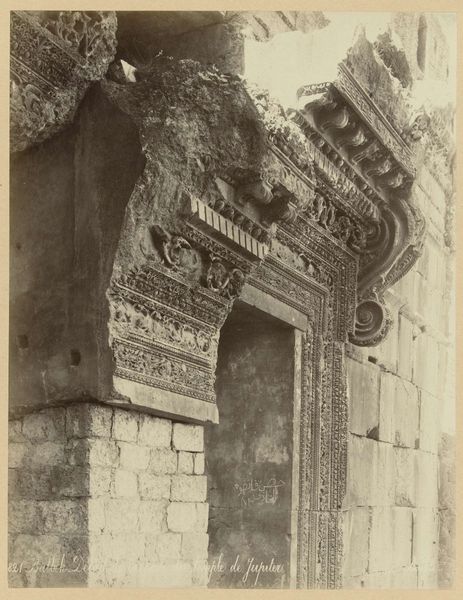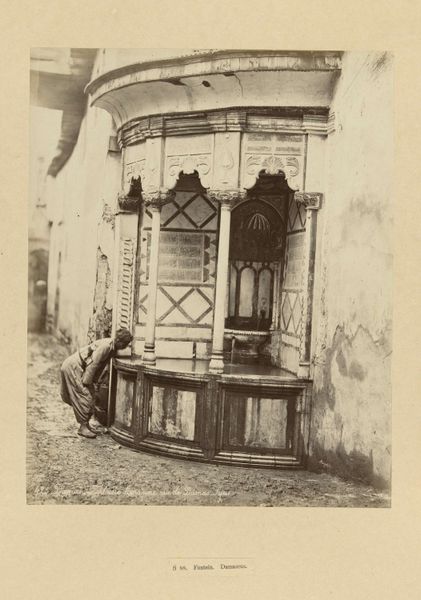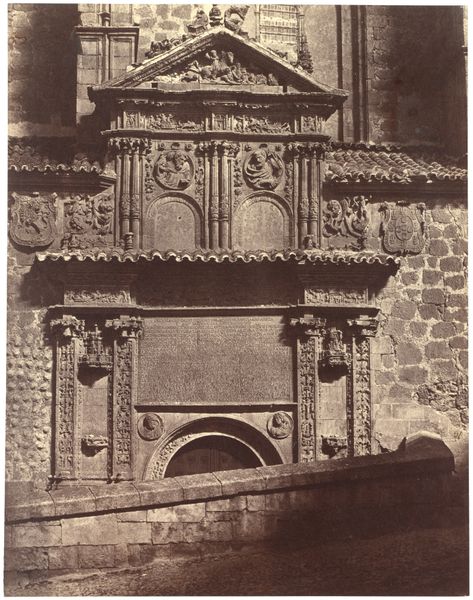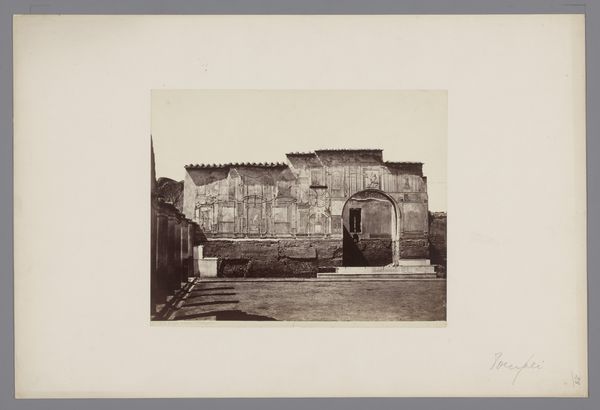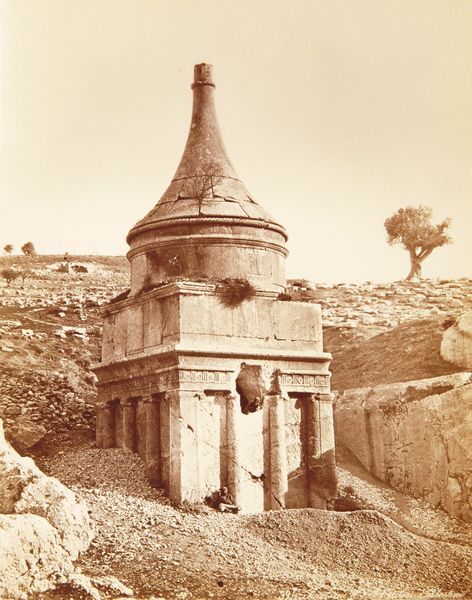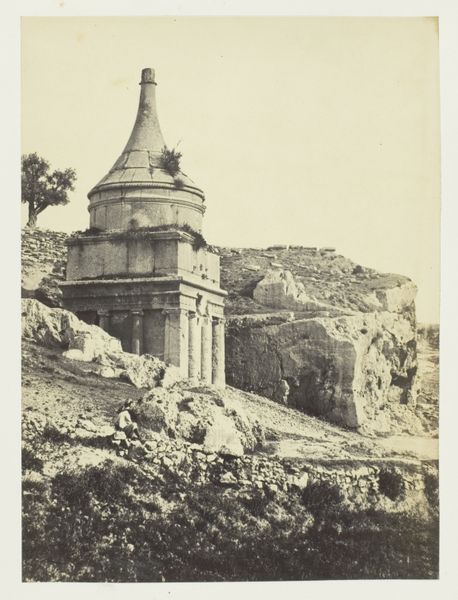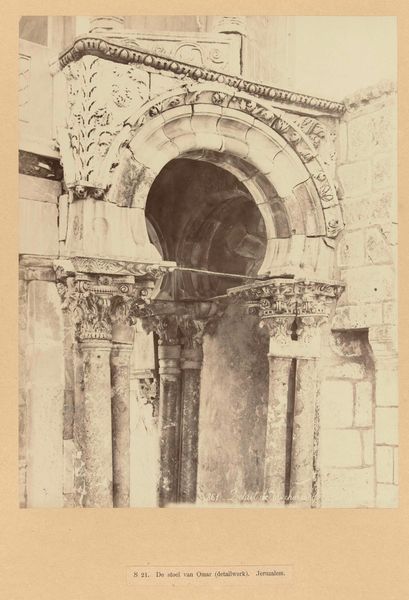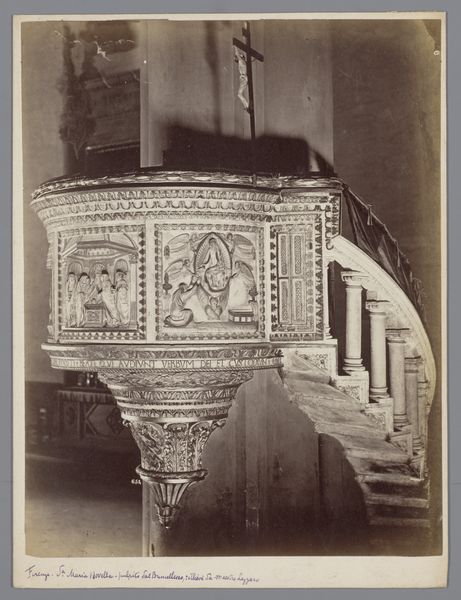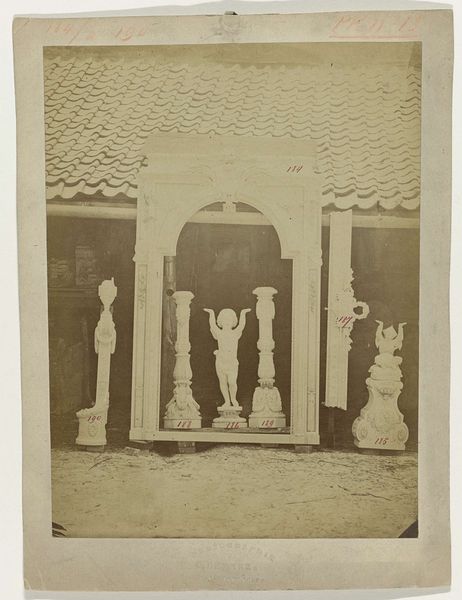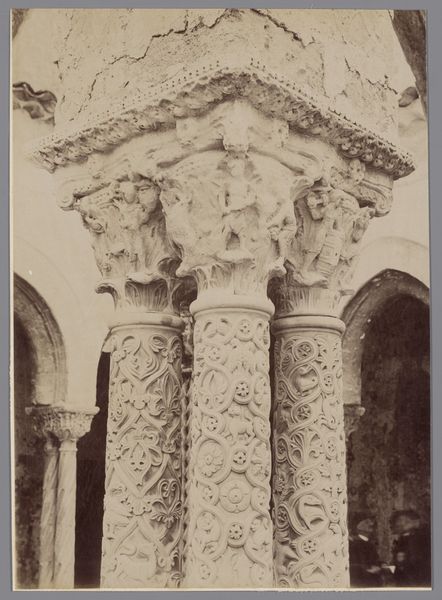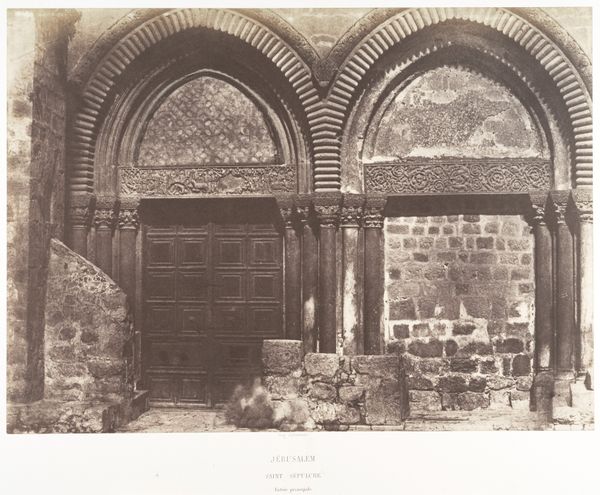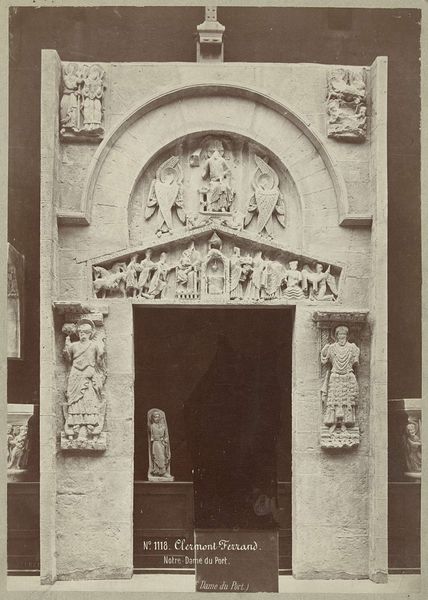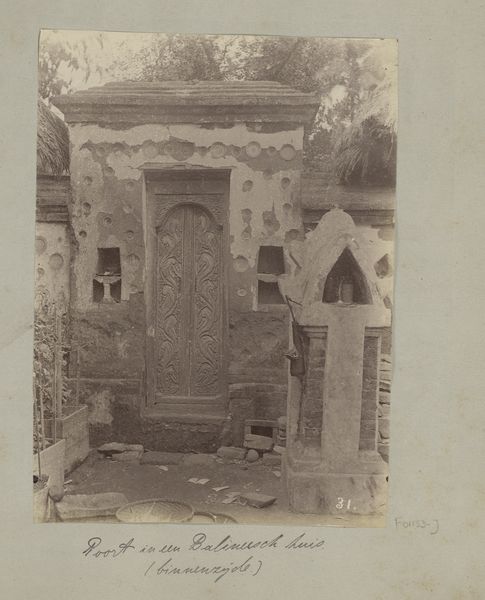
photography, gelatin-silver-print
#
aged paper
#
landscape
#
photography
#
historical photography
#
old-timey
#
orientalism
#
gelatin-silver-print
#
19th century
#
islamic-art
Dimensions: height 278 mm, width 221 mm, height 559 mm, width 468 mm
Copyright: Rijks Museum: Open Domain
Editor: So, here we have Fèlix Bonfils’ gelatin-silver print, “Grave of a Daughter of Prophet Muhammad, Damascus,” created sometime between 1867 and 1877. The wrought iron structure is striking, almost cage-like. The patterns give me a sense of endless repetition, and the weathered look definitely tells its age. What catches your eye, or perhaps, how do you interpret the imagery within this photograph? Curator: That repetition you mentioned is key. Look closely at the repeated circular motifs within the ironwork. To me, they echo cosmological symbols, hinting at the celestial sphere and cycles of life and death, all within a sacred Islamic space. Doesn't the intricate geometry evoke a sense of the infinite? Consider, too, the context: Bonfils was working during a surge of Orientalism. What cultural preconceptions do you think might have shaped his gaze, and how might those have influenced his choices? Editor: I suppose I hadn’t considered the "outsider" perspective of the artist. It's a constructed view, isn't it, layered with 19th-century European assumptions? I was initially drawn to the stark composition, but now I see those repeating patterns as possibly reinforcing a Western idea of the “exotic” East. Curator: Exactly! The "exotic" is built. These patterned screens aren't just decorative; they serve as veiling, boundaries, and a connection to tradition, constantly reminding the viewer about spiritual presence. The structure almost reads like a reliquary, safeguarding a sacred memory. Are there similar symbolic forms found in funerary architecture elsewhere that come to mind? Editor: That’s a great connection – I guess similar structures exist in different cultures, as an enduring way of honoring and protecting the memory of someone important. Curator: It certainly is. The interplay between the universal human experience of grief and its specific cultural articulation in this photograph offers a rich space for contemplation. Editor: I agree; thinking about this as more than just a record, but as a convergence of faith, memory, and cultural perspective definitely broadens its impact for me. Curator: It's amazing how symbols can weave such complex layers of meaning across time.
Comments
No comments
Be the first to comment and join the conversation on the ultimate creative platform.
